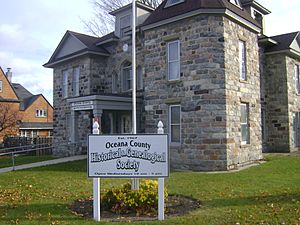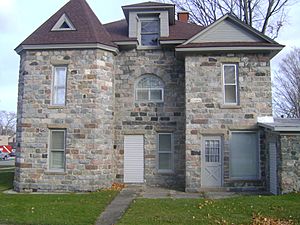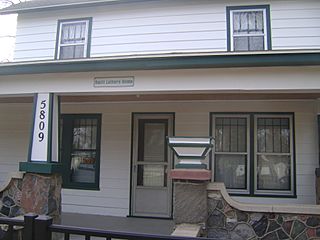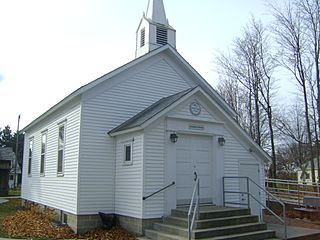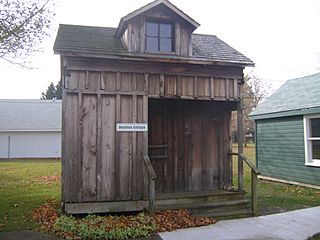- This page was last modified on 17 October 2025, at 10:18. Suggest an edit.
Oceana County Historical & Genealogical Society facts for kids
The Oceana County Historical & Genealogical Society helps people learn about the history of Oceana County, Michigan. Their main office and library are in Hart, Michigan. They also have a group of museums called the Historical Park Museums in Mears, Michigan. Mears is about 4 miles away from Hart.
History of the Society
The society started a long time ago, in the 1880s. Back then, it was called the Oceana County Pioneers and Historical Society. During World War II in the 1940s, the group stopped holding regular meetings.
But in 1967, people met in Pentwater, Michigan to bring the society back. It was then called the Oceana County Historical Society. The first 112 members were from well-known families in the county. Some of these families included the Royals, Chases, and Lathers.
You can visit the Society's library in Hart for free. Most of the people who work there are volunteers. The society gets money from donations and special events. Their main goal is to collect and take care of historical items from Oceana County. They have photos from 1850 to 1950, family history records, scrapbooks, and old objects. Many of these items were given by local people.
In 1983, the Oceana County Historical Society added a group focused on family history. This group became part of the main society. That is when the name changed to "Oceana County Historical & Genealogical Society."
The Chadwick-Munger House
Since 1986, the Society's main office has been in the old Chadwick-Munger house in Hart. The society bought the house in 1984. This historic house was built in the late 1800s. It was first the home of Harvey Jenner Chadwick, who was a doctor and pharmacist. Later, another doctor named L.P. Munger lived there. Before the Society moved in, it was used as offices for the Oceana County Health Department. You can read a book called Chadwick-Munger, The Story of a House to learn more about it.
The outside of the house is made from stones found in the area. These stones were left behind by glaciers. The way the stones are put together is called ashlar stonework. This means the stones were shaped to have flat surfaces. This type of stone building is common in places where glaciers used to be.
Some of the stones came from western Michigan. These were sedimentary rock, which is not too hard to shape. Other stones, like igneous rock and metamorphic rock, came from Canada. These rocks are very hard. It was a lot of work to make them flat and smooth. Usually, these hard rocks are used without being shaped, often for walls or foundations.
Oceana Historical Park
The Oceana County Historical & Genealogical Society also runs the Oceana Historical Park Museum Complex. It is free to visit. The park has several buildings and structures in Hart and Mears. The main part of the park is in Mears, about 4 miles from Hart. Most of the museums are located there.
The Swift Lathers Museum is a very important building at the Mears historical park. The museums show the history of the area, mostly from the 1800s and 1900s. The Society has seven buildings and a storage building in total. Five of these buildings are museums at the Mears park. These include:
- The Robinson Museum
- The Swift Lathers Museum
- The Transportation Museum
- Boynton Cottage Museum
- The Swedish Mission Covenant Church
The Old Town Hall is also part of the complex. It is located one block east of the historical park in Mears.
The Oceana Historical Park has buildings, displays, and gardens. You can also see old railroad items and tracks. There is a Transportation Building with antique vehicles. The Swedish Church is another interesting building. The Boynton Cottage was moved to the park from the Little Sable Point community. It is now a museum where you can experience what a beach cottage was like in the early 1900s.

